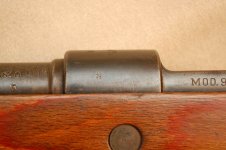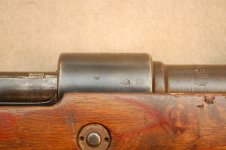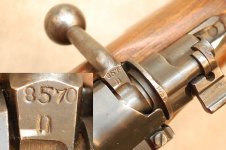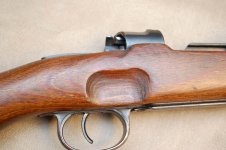I was going to shoot some photos of this, but my camera died after these 2 photos. Rather than wait, I'll post what i have for now. Recycled S/42 G reciever in the n block. All matching, bolt is an armorers spare numbered during production. Really neat rifle!



Attachments
-
 DSC_0003.JPG99.6 KB · Views: 794
DSC_0003.JPG99.6 KB · Views: 794 -
 DSC_0002.JPG98.5 KB · Views: 797
DSC_0002.JPG98.5 KB · Views: 797 -
 lr.jpg110.2 KB · Views: 159
lr.jpg110.2 KB · Views: 159 -
 rr.jpg111.4 KB · Views: 148
rr.jpg111.4 KB · Views: 148 -
 bolt.jpg124.4 KB · Views: 707
bolt.jpg124.4 KB · Views: 707 -
 bolt1.jpg95.4 KB · Views: 148
bolt1.jpg95.4 KB · Views: 148 -
 root.jpg87.6 KB · Views: 145
root.jpg87.6 KB · Views: 145 -
 boltcut.jpg119 KB · Views: 168
boltcut.jpg119 KB · Views: 168 -
 bands.jpg106.2 KB · Views: 130
bands.jpg106.2 KB · Views: 130 -
 side.jpg73 KB · Views: 151
side.jpg73 KB · Views: 151 -
 stock.jpg127 KB · Views: 184
stock.jpg127 KB · Views: 184 -
 fplate.jpg91.5 KB · Views: 156
fplate.jpg91.5 KB · Views: 156
Last edited:







